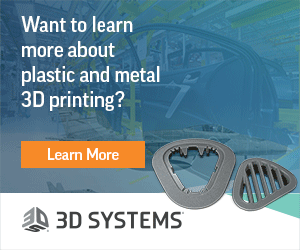Ted Sorom, CEO and co-founder of Mantle, is looking to revolutionize metal 3D printing. Mantle has a paste extrusion method that features a post-machining step to mill unfinished parts and achieve better results. The paste is unique in that results in parts that harder than green components made using metal binder jet, which are likely to collapse under their own weight. Mantle’s parts can then be machined, making them ideally suited for end use. Less finishing, less post-processing, fewer supports, better surface quality, and lower costs could be a result. Rather than present its technology as the end-all-be-all of all metal 3D printing, Mantle is, for now, targeting tooling alone. This tight focus accelerates the firm’s go-to market. This was really an interesting chat and we hope that you enjoy it.
Podcast (podcast-audio): Play in new window | Download
Subscribe to Our Email Newsletter
Stay up-to-date on all the latest news from the 3D printing industry and receive information and offers from third party vendors.
You May Also Like
3D Printing Unpeeled: Orbex Investment, IndoMIM and HP, Ultrasonic Waves
INDO-MIM has bought three HP Metal Jet S100 printers, operating two in India and one in Texas. This is a win for HP because the company has deep experience in...
3D Printing News Briefs, April 3, 2024: Kickstarter FDM 3D Printer, Artificial Eyes, & More
In 3D Printing News Briefs today, we’re talking about an FDM 3D printer on Kickstarter, advancements in artificial eye creation, and 3D printed solenoids for electromagnets. Then we’ll move on...
Firestorm Gets $12.5M from Lockheed and Others to Automate Drone Production with 3D Printing
Firestorm Labs is advancing an initiative that has been a topic of discussion on our site for a while: automating drone swarm production. Drones are increasingly altering the landscape of...
3D Printing Leaders Team with Rivelin for Robotic Metals Post-processing
UK-based Rivelin Robotics is working on creating a manufacturing cell to automate the post-processing of metal 3D printed parts. If successful, this approach could reduce the costs of metal 3D...






























